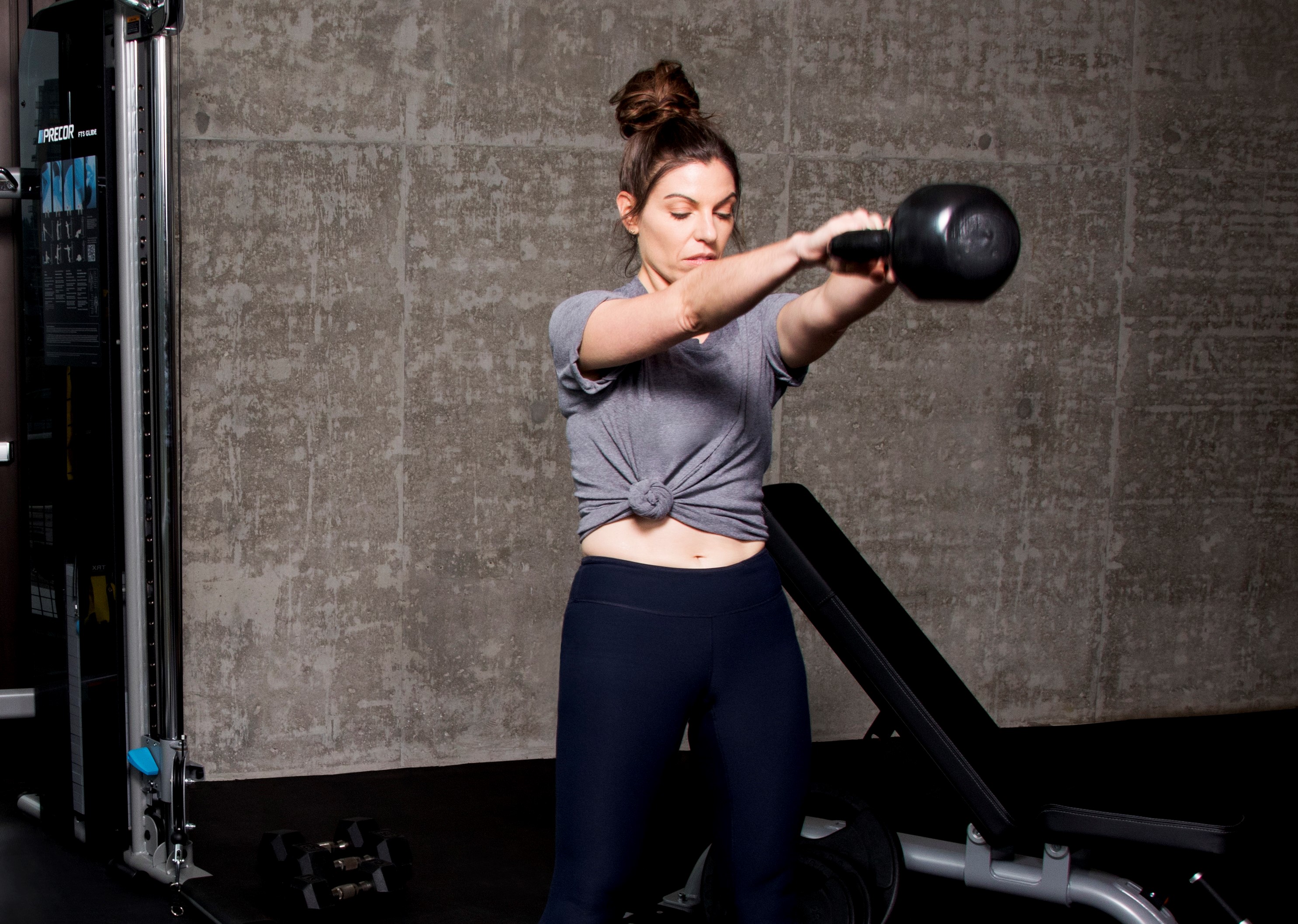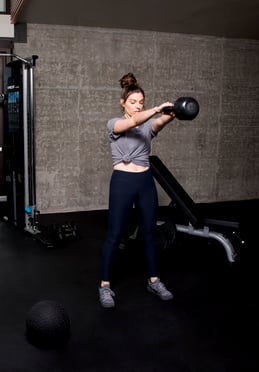
Most Effective At Home HIIT Workouts

Most Effective At Home HIIT Workouts
In this series, I will be talking about at-home HIIT workouts and how you can benefit from them.
Many say we have a weight loss problem in this country. I would argue that it is more of a weight management problem. Losing weight is relatively simple. We have tons of resources on nutrition, exercise, and mindset in the palm of our hands. Those that want to lose weight will make it happen.
But those that make the weight loss happen just can’t
seem to keep the weight from coming back. It almost always creeps back up, causing another round of heavy movement and severe diet restriction. This cycle continues over and over and over.
Why is this happening?
In short, this happens because most that want to lose weight want to run the race like the hare rather than the tortoise. They don’t choose to lose weight effectively. Losing body fat effectively requires a certain protocol. Let’s touch on the basics.
LOSING WEIGHT 101
In order to lose weight, our body must be in a caloric deficit. Plain and simple. A caloric deficit occurs when the body is burning more calories than it consumes.
There are many factors that contribute to calories burned like metabolism, activity, and digestion. Our metabolism and digestion contribute to our automatic calorie burn. Our activity determines calories burned manually.
metabolism, activity, and digestion. Our metabolism and digestion contribute to our automatic calorie burn. Our activity determines calories burned manually.
In order to create an environment where we are burning more calories than we are taking in, we need to either speed up our metabolism, eat foods that burn more calories through digestion (like protein and fiber), increase our activity, or a combination of the three.
THE RIGHT WAY TO LOSE FAT
When you hear “burn more calories than you consume in the day”, the first thing you may think to do is simply eat less and move more. This is a legitimate option but may not be the most ideal. In fitness, more isn’t always better. As you continually eat less and move more, you may very well experience negative consequences. Your metabolism may slow down (making fat loss far more difficult), you may lose muscle (creatine a lower quality of life and slower metabolism) and you may physically suffer from non-stop activity.
The name of the game when it comes to reaching your goals is the do the least amount of work to illicit the most amount of change. This is how you keep the weight off for good.
Different types of exercise play different roles in how your body burns calories. Cardiovascular activity burns the most amount of calories per session. Weightlifting burns a fewer amount of calories per session but can increase your body’s automatic calorie burn (metabolism). Finding the right balance between cardio and weights is key for your long-term success.
The type of cardio and weightlifting you do matters, too. Training for strength and muscle growth with weights has been shown to be the most beneficial for long term fat loss. High Intensity Interval Training (HIIT) has been shown to be one of the most effective solutions to fat loss as well.
HIIT FOR FAT LOSS
What is HIIT? HIIT is a type of cardiovascular training that involves bringing the heart rate up high, bringing it back down, and repeating.
HIIT has been shown to not only burn lots of calories per session but continue to keep calorie burn elevated even after the session is over.
At-home HIIT workouts also offer much more variety in exercises than LISS (low intensity steady-state) cardio does. As long as you alternate between intervals of elevated heart rate and low heart rate, you’re doing HIIT. You can use your bike, treadmill, and rower at home. I have found that using weights has served to be the best way to perform HIIT workouts with my clients.
Using weights in your at-home HIIT workout will not only bring you the benefits of calorie burn and heart health, but may also enhance muscular endurance as well as potentially increase the amount of lean muscle mass on your body (depending on your current state of fitness). Using weights to perform HIIT will also give you the opportunity to practice movements that will help you increase your strength during your traditional weightlifting workouts.
Below is an example of how you can use weights in your at-home HIIT workout.
Before implementing HIIT into your routine, read the below statement.
HIIT becomes less and less effective the more it is done. Again, the goal is to illicit the most change with the least amount of work. Start small and slowly increase your HIIT over time. HIIT sessions should not last longer than 20 minutes. For maximum results, HIIT should not be in your routine for more than 6 weeks.
SAMPLE AT-HOME HIIT WORKOUT:
15-20 minutes total. Minimal rest between sets, 2-minute rest between rounds. Stop the workout when the time range is met. Use a weight that you can complete for 15-20 reps.
Dumbbell Squat 10 reps
Dumbbell Overhead Press 10 reps
Dumbbell Bent Over Row 10 reps
Dumbbell Reverse Lunge 10 reps per side
Dumbbell Push-Up Renegade Row 10 reps
Rest
If you’re interested in more at-home HIIT workouts, download our HIIT At Home Guide here!
ABOUT THE AUTHOR
Adam is a fitness professional, baseball fan, and cookie fanatic based in Fort Collins, Colorado. After hanging up the cleats, he found a strong interest in the human body and how it performs. Since then, Adam has been transforming lives through fitness in a fun and encouraging atmosphere. As an ACE CPT and Fitness Nutrition Specialist, he is constantly moved to help people improve in all walks of life.
Subscribe Here!
Topics
- Accessible Fitness Machines (1)
- American Diabetes Association (1)
- American Heart Month (2)
- Awareness (3)
- Benefits of Kale (1)
- Best Fitness Websites (1)
- Breast Cancer (1)
- Breast Cancer Awareness (4)
- Buyer Beware (1)
- Cancer (1)
- Cancer Awareness (4)
- Carbohydrates (1)
- Cardio Aid (2)
- Cardio Equipment (7)
- Celebrity Fitness (1)
- Childhood Obesity (2)
- Christmas List (1)
- Commercial Fitness (12)
- Community (1)
- Corporate Wellness (5)
- Cortisol (1)
- Crossfit (2)
- Crosstrainer (1)
- Deals and Discounts (10)
- Diabetes Awareness (1)
- Diamondback Ellipticals (1)
- Diet (1)
- Diet and Nutrition (31)
- Diet Myths (1)
- Dietary Lifestyle Options (1)
- Eating Clean (1)
- EFX (1)
- Elliptical (14)
- Ellipticals (6)
- ElliptiGo (2)
- Energy (1)
- Exercise (6)
- Exercise Accessories (1)
- Exercise and Diabetes (1)
- Exercise at Work (1)
- Exercise Bike (6)
- Exercise Equipment (26)
- Exercise Equipment Demos (11)
- Exercise Machine (5)
- Exercise Prevents Cancer (1)
- Exercising at Night (1)
- Expresso Bike (2)
- Expresso Stationary Bike (2)
- Fat Loss (7)
- Fitness (23)
- Fitness Accessories (2)
- Fitness and Exercise (99)
- Fitness at Work (1)
- Fitness Blogs (6)
- Fitness Books (1)
- Fitness Education (75)
- Fitness for Special Needs (1)
- Fitness Gifts (1)
- Fitness Journey (5)
- Fitness Machine (11)
- Fitness Machines (4)
- Fitness Motivation (13)
- Fitness on the Go (1)
- Fitness Room (2)
- Fitness Stocking Stuffers (1)
- Fitness Technology (1)
- Fitness Tips (2)
- Fitness Tracker (1)
- Fitness Videos (1)
- Fitness Wearables (1)
- Flexibility (2)
- Food Myths (3)
- Fun and Educational Videos (9)
- Functional Training (3)
- Getting Back in Shape (1)
- GFX (1)
- Gift Ideas (1)
- Gluten Free (1)
- Goals (1)
- Gym Safety (1)
- Health (6)
- Health and Fitness (96)
- Health Myths (1)
- Healthy Eating (2)
- Healthy Food (6)
- Healthy Lifestyle (3)
- Healthy Recipes (4)
- Heart Disease (1)
- Heart Health (11)
- HIIT (7)
- HIIT at Home (7)
- Hip Hop (1)
- Holiday Eating (1)
- Holiday Fitness (1)
- Holiday Meals (1)
- Holiday Parties (1)
- Holidays (1)
- Home Fitness (77)
- Home Fitness Equipment (43)
- Home Fitness Machine (2)
- Home Gym (19)
- Home Gym Design (4)
- Hospitality Fitness (1)
- How to Get More Energy (1)
- Hydration (1)
- IFT (1)
- Injury Prevention (1)
- Insider (1)
- Inspiration (1)
- Inspire Ellipticals (1)
- Kale (1)
- Kids Fitness (2)
- Let's Move! (1)
- Low Cholesterol (1)
- Meal Planning (3)
- Men's Fitness (2)
- Metabolism Booster (1)
- Michelle Obama (1)
- Mobility (3)
- Motivation (1)
- Motivation to workout (4)
- Movember (1)
- New Product News (24)
- New Products (1)
- Nu-Step (1)
- Nustep (1)
- Nutrition (2)
- Nutrition Myths (2)
- Office Exercise (1)
- P3 News (7)
- P3 Retail Store News (12)
- Paleo (1)
- Partnership for a Healthier America (1)
- Personal Training (1)
- Postpartum Exercise Routine (1)
- Precor (17)
- Precor Ellipticals (6)
- Precor Treadmills (4)
- Push Pedal Pull (28)
- Recovery (1)
- Recumbent Bike (4)
- Recumbent Cross Trainers (1)
- Resistance Training (2)
- Resolutions (1)
- Rowing Machine (7)
- senior fitness (1)
- silver sneakers (1)
- Site Blog (33)
- Stay Active During Holidays (1)
- Strength Training (11)
- Stress (1)
- Stress Weight (1)
- Stretching (2)
- Strong is the New Skinny (1)
- Successful Resolutions (1)
- Trade in Elliptical (1)
- Trade in Fitness Equipment (1)
- Trade in Treadmill (1)
- Treadmill (13)
- Treadmills (7)
- True Treadmills (1)
- Used Elliptical (1)
- Used Equipment (3)
- Used Exercise Machines (1)
- Used Fitness Equipment (1)
- Used Treadmill (1)
- Valentine Workout (1)
- Valentine's Day (1)
- Vegan (1)
- Vibration Training (5)
- Warming Up (1)
- Weight loss (17)
- Weight Loss Booster (1)
- Weight Training (3)
- Women's Fitness (4)
- Working Out (5)
- Workout Inspiration (2)
- Workout Partner (2)
- Workouts (5)

